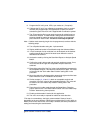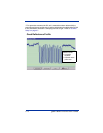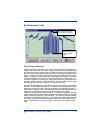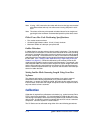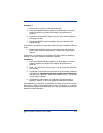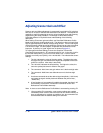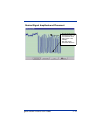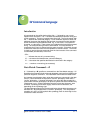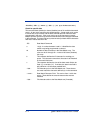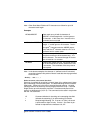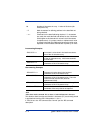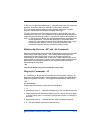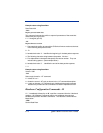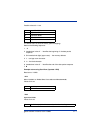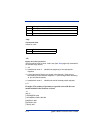
Quick Check® SV Series User’s Guide 6 - 1
6
SV Command Language
Introduction
All commands to the verifier begin with a tilde, ‘~’, followed by one or more
alphanumeric characters. The ‘~’ identifies the subsequent character string as a
verifier command. The string is parsed from left to right. The first character after
the ‘~’ identifies the command category. Each command requires at least one
additional character that identifies the particular command from that category.
Some commands require additional data, e.g., a data value, or an option ID
character, or a text string. These values are included at the end of the command
string. The command string format is shown below. As each character is
received by the SV unit, it echoes back the same character. Echo-back is used
to determine when the verifier has completed the command action. The verifier
is ready to receive the next command when the last character of the command
is transmitted (echoed-back) to the host.
~CPx…
~ - indicates the start of a command string.
C - a character that identifies the command Category
P - a character that specifies the Particular command in the category
x… - a number or text string (as necessary)
Data Match Commands – B
A ‘~’ followed by a ‘B’ specifies a command from the Data Match category. All
Data Match commands include a second alphabetic character that identifies the
particular diagnostic command. The Data Match Commands are listed below.
An important consideration when using data match type commands is the data
format. These commands incorporate a “scanner” philosophy rather than a
“verifier” philosophy. A scanner philosophy is to report the data encoded in a
symbol while a verifier philosophy is to report all symbol characters whether they
include data or not. Symbol characters typically include stop character, start
character, symbology mod check digit(s), internal control characters, etc.
depending on the symbology type.
The data fields described in the B commands below include data characters only,
therefore the ~B commands have a “scanner” philosophy. The one possible
exception is in UPC or EAN symbols the symbology mod 10 check digit is also
considered a data character.



